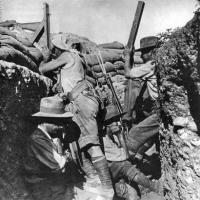
The Ruy Exchange by GM Magesh and GM Arun
People have plenty of choices in an opening. Some choose to play the dynamic and well analysed main variations, while some choose to play subtle yet promising side line and others choose to play some razor sharp surprise gambits like the ones we saw in our previous article. Today we will take a closer look into an opening that falls into the second category that we have mentioned, the Ruy Lopez Exchange.
Before we go into the nitty gritty details of this opening we will briefly discuss opening choices and what triggers people to play different openings. Many people simply believe chess is a battle of two minds over a chess board, which is true, but we tend to downplay the other battle that takes place before the game. One of the finest examples of this 'preparation' battle as we would call it is the World Championship match between Anand and Kramnik last year. To anyone who was following the games, it was obvious that Anand had outclassed his opponent in their battle before the game. Kramnik did bounce back a little during the second half of the match, but the initial blow was good enough to take Anand through to the end. So the point here is, how do we decide on our opening choices? There are some basic points to help us here, for example we can study our opponent's games and find out if he is more of a positional player or he likes to attack a lot or he plays intuitive chess and many more traits like these. Based on these ideas we can try to avoid his strengths and expose his weaknesses. Obviously we can stretch ourselves only to our limits, there would be no point in taking your opponent to an uncomfortable position for him if it is equally uncomfortable for you.
Coming back to the topic of today's discussion, the Ruy Lopez Exchange as mentioned earlier is a very subtle and positional opening that requires a lot of patience in maneuvering the pieces to the optimal squares and good endgame technique. If you find that your opponent is a very dynamic player and always tries to initiate something on their own and they lack good endgame technique, then this opening may be a good choice against them.
Our first game today is a blindfold rapid game in which Leko dismantles his opponent Vallejo Pons in a very simple yet classy game. Personally I have had several occasions when I faced this opening and lost pretty easily without having a clue of what went wrong.
Like we mentioned earlier, black does not have to make clear mistakes to lose the game, just lack of understanding will be enough to land in a mess. Our next game is a similar positional crush. This time Ivanchuk gives the blow to David Navara.
Again, white did not have to try that hard, he just had to put his pieces on the right squares and expand his space when he had an opportunity and that already yielded him a point.
In our last game let us take a look at the position where white does not break through the center with d4, instead opting for the even quieter d3.
Yes it was a pretty long game, but if you want to play the Exchange you better get used to such long games, because they can fetch you some critical points. Next week we will come back and take a look at black's ideas in this opening.

